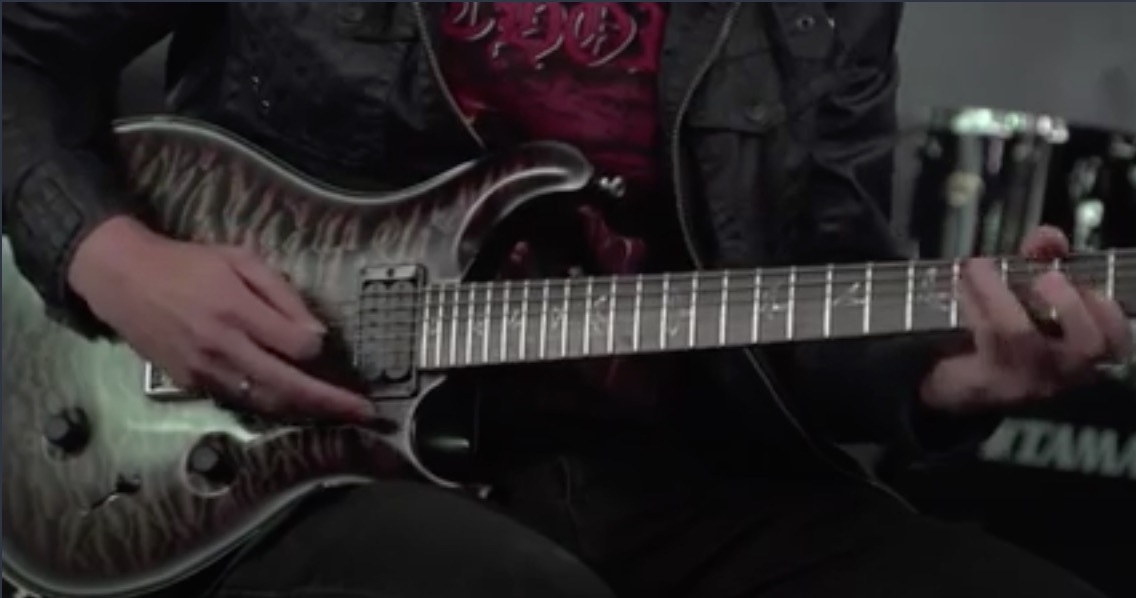How to Use Chord Changes to Devise Inventive Riffs
Learn how to build a chord progression from interesting and unusual voicings.

One of my favorite ways to write primary song riffs with Periphery and Haunted Shores is to first come up with a chord progression built from interesting and unusual voicings, then break up each chord into single-note patterns built primarily from the chord tones.
The challenge is to devise different ways to connect all of the chords in the progression via these single-note phrases. This way, I will end up with a riff that melodically “describes” specific and shifting harmonies without actually sounding any chords, per se.
A great example of this technique in practice is the bridge of the song, “Have a Blast,” featured on Periphery II. The first thing I came up with was the chord progression detailed in FIGURE 1: with the guitar tuned to drop-D one whole step down (low to high, C G C F A D), the progression is Gm9sus4 Csus4 F/A Bb(maj7) C/F C/E. You’ll notice that chords like Gm9sus4 and Csus4 convey a really cool, unresolved feeling, creating a harmonic ambiguity that I really love the sound of.
As soon as I had this progression together, I knew I wanted to create a riff out of it. Personally speaking, when I’m looking to write a complex, “note-y” riff, I find it very helpful to come up with the chord progression first. It serves to provide “markers,” so, in the space between chord 1 and chord 2, as long as I land on chord 2 at the right spot, everything else in between is okay and acceptable.
FIGURE 2 illustrates the “Have a Blast” riff as heard on the track: it’s played at a pretty brisk tempo, 200 beats per minute, and bar 1 is built from the notes of the chord played individually, with a finger slide added from A to Bb on the D string. Bar 2 functions as an arpeggiation of G6/7, with the open high E string used as a common tone carried over from bar 1. Bars 3 and 4 feature the full voicings of Csus4 and F/A, as does the beginning of bar 5 with the sounding of the full Bb(maj7) chord.
At the end of this bar, into bar 6, I break into a single-note line built from wide intervals and fretboard slides, which serve to accentuate the harmonically unresolved vibe of the musical passage. Bar 7 begins with an octave slide down from F5, fretted across the bottom three strings at the 15th fret, down to the third fret; the F5 here substitutes for the C/F in the progression, though either could be used. I anticipate the change to C/E by switching to this chord on beat four of bar 7, instead of hitting it squarely on beat one of bar 8.

All the latest guitar news, interviews, lessons, reviews, deals and more, direct to your inbox!
